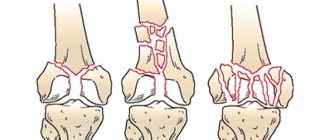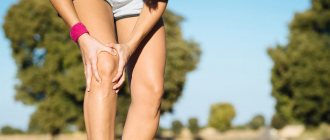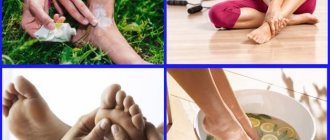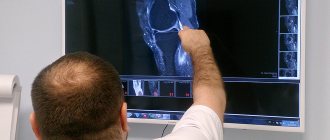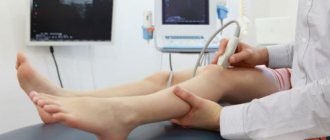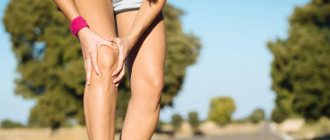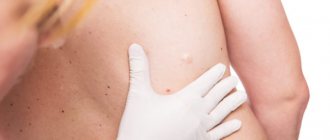Why does flat feet occur?
Foot deformity can be congenital or acquired. There are many reasons for this:
- fractures, injuries, ankle sprains;
- injuries of the foot, heel and tarsal bones;
- rickets, against which the bones lose density and suffer from excess load;
- weakness of muscles, ligaments and bones;
- metabolic disorders;
- excess body weight;
- incorrect, narrow, uncomfortable shoes.
The percentage of congenital flat feet is not high - only 3%. The foot is deformed due to joint dysplasia. Regardless of the source of the problem, it must be addressed, since the pathology disrupts the normal biomechanics of movement and contributes to diseases of the musculoskeletal system.
Flat feet combined with excess weight are a huge threat to your joints.
Why is this problem more pressing for women?
Most often, knee arthrosis and flat feet are diagnosed simultaneously in women. The reason is wearing narrow shoes with high heels. Shoes compress the toes and reduce the permeability of blood vessels. There is a deficiency of vitamins and microelements. The cartilage begins to deform and is not restored to its original shape. The next step is treatment of osteoarthritis.
Women are more susceptible to arthrosis along with flat feet, since endocrine changes in the female body occur more often and more intensely than in the male body. This problem is especially acute during menopause.
Women are more susceptible to arthrosis and flat feet
Causes
Flat feet in adults in most cases develops due to a hereditary predisposition. The reasons for the development of pathology in adults can be:
- obesity;
- standing still for a long time;
- wearing excessively narrow shoes;
- decreased muscle elasticity;
- age-related changes;
- a lot of stress on the legs, especially in pregnant women.
The causes of flat feet can be of a professional nature; in particular, flat feet are quite often diagnosed among sellers, drivers, and loaders.
What symptoms indicate that you have arthrosis and flat feet?
The problem can be recognized by the following signs:
- foot pain;
- swelling;
- tired legs;
- change in gait;
- curvature of the bones of the foot.
At first, the pain appears sporadically. Then it intensifies and manifests itself even at rest. Pain from the foot is transmitted upward - to the lower back and hip joint. After a night's rest, a person experiences relief.
After active movement, swelling occurs on the foot. To get rid of pain and discomfort, you have to rest for several hours. It becomes increasingly difficult to squat and maintain balance as the midfoot gradually expands.
If flat feet and arthrosis of the ankle or knee progress, the gait changes. From the side, a heavy gait and club feet are noticeable. Posture is disturbed - problems with blood circulation and new diseases of other systems and organs arise.
Flat feet lead to a whole chain of problems
When to see a doctor
You should make an appointment with a doctor if you have the following symptoms:
- legs hurt or get tired when standing;
- in addition to pain, there is swelling of the foot;
- diagnosed with rheumatoid arthritis.
Diagnosis and treatment of flat feet in adults is carried out by an orthopedic surgeon. A multidisciplinary medical clinic (academician Roitberg’s clinic) in Moscow offers the services of qualified doctors in various fields of medicine. You can make an appointment with an orthopedist using the form on the website or by calling +7. Our clinic is located at the address: 2nd Tverskoy-Yamskaya lane, building 10, a 5-minute walk from the Mayakovskaya metro station.
How is arthrosis treated for flat feet?
Since the patient has a history of two dangerous diseases of the musculoskeletal system, treatment must be comprehensive. Depending on the severity, clinical manifestations, and intensity of pain, the following measures and medications are prescribed:
- painkillers and non-steroidal anti-inflammatory drugs, for example diclofenac, ibuprofen, ketoprofen;
- for muscle spasms of the foot - muscle relaxants to relax muscle tissue;
- chondroprotectors – to stimulate the growth of cartilage tissue and partially reduce pain;
- in difficult cases - surgical intervention (surgical correction of bone deformities, cleaning bones from osteophytes or endoprosthetics of a damaged joint).
What is the real danger of flat feet and can it be cured?
How to make an appointment with an orthopedist
A multidisciplinary medical clinic (academician Roitberg’s clinic) in Moscow offers European-level services for the diagnosis, treatment and prevention of flat feet in adults. To receive highly qualified medical care, you must make an appointment with an orthopedist who will conduct an examination and comprehensive medical examination of the patient. If necessary, the orthopedist will consult with or refer other specialists.
To make an appointment with a specialist, use one of the following methods:
- a quick entry form on the main page of the center’s website;
- by phone 24 hours a day +7 (495) 775-73-60;
- using a mobile application.
Our clinic is located in the center of Moscow at the address: 2nd Tverskoy-Yamskaya lane, 10, a five-minute walk from the Mayakovskaya metro station, as well as not far from the Belorusskaya, Tverskaya, Chekhovskaya and Novoslobodskaya metro stations.
Will physiotherapy help in such cases?
Physiotherapy is also effective in reducing pain. After a course of procedures, there is no need to take large doses of medications, therefore, along with drug treatment, physiotherapy is often prescribed.
- Manual therapy is aimed at correcting the position of the foot joints, correcting the heel and metatarsal bones, and toes. Chiropractors effectively restore blood circulation in the tissues around the damaged joint, especially if their sessions are combined with massage.
- Mud baths and clay wraps will improve muscle tone, increase blood circulation, and activate metabolic processes.
- The same problems are solved by other physical procedures, for example magnetic or laser therapy.
Physiotherapy does not treat flat feet or arthrosis: it is an auxiliary method
How to avoid arthrosis if you have flat feet
Flat feet today are easily corrected with the help of orthopedic insoles and special shoes. With arthrosis, the situation is more complicated: the disease has no cure and tends to progress. Therefore, if you have a deformed foot, remain vigilant so as not to trigger the disease. What can you do?
- Avoid wearing tight shoes or high heels except occasionally.
- It is no coincidence that orthopedists and rheumatologists recommend losing weight. If you have extra pounds, the heel bone deforms faster, as do the joints of your toes. Heart function deteriorates, coxarthrosis and gonarthrosis, spondyloarthrosis, and other diseases develop. Therefore, reconsider your diet and physical activity.
- Try not to overexert your feet. Change positions more often, do not squat, do not cross your legs.
- Take part in safe exercise, such as walking or swimming.
- Walk barefoot on grass or sand more often - this is an excellent prevention of arthrosis with flat feet.
Arthrosis is a serious and dangerous disease. If there is a history of flat feet, the situation becomes more complicated, but by no means becomes hopeless. Reconsider your lifestyle and habits, take care of your joints - and they will serve you faithfully for many years!
Foot pain
General information
foot is the lowest part of the lower limb . The part of the foot that is in direct contact with the ground is called the foot or sole. The foot has three bony support , two of which are located in the forefoot and one in the hindfoot.
The hindfoot is the heel ; the forefoot is the toe of the foot, which includes five toes. The toes include the phalanges of the foot skeleton. The bones of the foot extend from the tips of the toes to the heel, uniting in the body of the foot.
The metatarsals and phalanges are similar to the metacarpus and phalanges of the hand, but are less developed due to their less mobility. When walking, the heel comes into contact with the surface first, then the lateral edge of the foot, the balls of the sole and the big toe.
The base of the foot is made up of 26 bones, the most important function of which is springing. The special structure of the foot (the presence of a longitudinal and transverse arch) ensures a softening of the load on the lower limbs, pelvis and spine. When the longitudinal arch is flattened as a result of weakness of the ligamentous-muscular system, deformation of the foot occurs, the disease flatfoot.
Depending on the nature of the damage to the arch, longitudinal and transverse flat feet are distinguished. It is possible to combine these forms with each other and with other foot deformities.
Pain in the foot due to illness
Foot pain is a very common cause of patient complaints. They can be general, diffuse, involving the entire foot, or limited to certain and small areas of the feet. Diffuse foot pain is sometimes associated with load or tension, but can also appear at rest, without any tension on the foot. Pain associated with exercise without any additional clinical manifestations may be early signs of foot insufficiency associated with calcium depletion (osteopathy) with:
- rickets;
- osteomalacia;
- senile osteoporosis.
What is striking is the pain of all the bones when pressing on them with the tip of a finger. Long-term bed rest for various diseases also causes diffuse pain in the feet, which is associated not with bones, but with insufficiency of the musculo-ligamentous apparatus . The same pain from insufficiency occurs with a rapid increase in total body weight or prolonged increased stress. Especially severe pain in the feet at rest and the almost complete loss of their ability to support with inflammatory-trophic changes accompany osteoporosis , which occurs after damage and diseases of the bones, joints and soft tissues of the ankle joint and foot. Severe diffuse foot pain , prolonged or paroxysmal, occurs with functional and organic vascular lesions. Local pain limited to certain areas of the foot can be due to a number of reasons. Methodical palpation by pressing with a fingertip in typical places makes it possible to make a topical diagnosis, and with it to find out the nature of the disease. The most common cause of foot pain is plantar fasciitis .
Plantar fasciitis
The plantar fascia is a wide band of connective tissue that runs along the plantar surface of the foot from the heel bone to the metatarsal heads in the forefoot. Plantar fasciitis is caused by stretching of the fascia, which is caused by excessive pronation of the foot.
Inflammation caused by stretching of the fascia in the heel area leads to pain both in the heel itself and in the arch of the foot. Pain in the feet is especially noticeable in the morning, when a person gets out of bed after a long rest.
a heel spur develops where it attaches to the heel bone . Therefore, it is important to begin treating functional changes before complications develop.
Other causes of foot pain
Foot pain can also be caused by the following reasons:
- arthritis;
- impaired blood supply;
- compression of the nerves between the fingers;
- deformation of the metatarsal bones.
Most often, this pain is caused by nerve damage or age-related changes in the foot, called metatarsalgia.
Foot pain due to age-related changes. With age, the protective function of the shock-absorbing fat layer in the area of the metatarsal heads gradually decreases. This condition can lead to compression of the bursae in the area of the metatarsal heads, which leads to their inflammation - bursitis.
Joint inflammation or rheumatoid arthritis can also cause pain.
Foot pain can be caused by a benign growth of nerve tissue called a neuroma, which surrounds the nerve. The neuroma usually occurs in the base of the third or fourth toe (Morton's neuroma), although it can also occur in other toes.
Neuromas usually occur on one foot and are more common in women. Typically, in the early stages, neuroma manifests itself as moderate pain in the area of the third or fourth toes, and is sometimes accompanied by a burning or tingling sensation. Negative symptoms are aggravated by wearing certain uncomfortable shoes, especially those with narrow toes. As the process progresses, the tingling becomes constant, regardless of what kind of shoes the person wears.
Traumatic foot injuries
Dislocation in the Lisfranc joint is also rare and can be complete or incomplete. With complete dislocation , all metatarsal bones are displaced; with incomplete dislocation, individual metatarsal bones are displaced from their normal position. The patient has pain in the foot. The shape of the foot changes.
The foot appears shortened and widens in the forefoot. If one of the metatarsal bones on the surface of the foot is dislocated, a protrusion in the form of a step is determined. The diagnosis is confirmed by X-ray examination.
Dislocation of the tarsal bones or dislocation of the Chopart joint is extremely rare. Dislocation occurs when the foot turns sharply. The patient is bothered by pain in the foot, which usually increases sharply with movement. Subsequently, swelling occurs, which quickly increases. In the foot below the site of dislocation, the blood supply is disrupted. The victim must be given pain relief and quickly taken to the hospital for urgent reduction of the dislocation.
Subtalar foot dislocation is rare. This dislocation occurs in the talocalcaneal and talonavicular joints. The mechanism of dislocation is a sharp twisting of the foot in any direction.
The talus bone is displaced from its place, and on the side opposite to the displacement a ligament rupture occurs. The patient complains of pain in the foot. The shape of the foot has been changed. To exclude fractures of the foot bones, X-rays are taken.
Dislocation of the foot in the ankle joint is not common and is accompanied by rupture of the ankle ligaments and joint capsule and ankle fractures, less often other articular fractures. Types of foot dislocations: external, internal, forward, backward and upward. An outward dislocation of the foot occurs when the foot is twisted sideways and outward.
In this case, a fracture of the outer ankle occurs. When the foot turns inwards, a fracture of the inner malleolus occurs and the foot dislocates inwards. A posterior dislocation of the foot can occur with a strong blow to the shin or with a sharp and strong plantar flexion of the foot, and an anterior dislocation occurs when the foot is bent towards the rear or the shin is struck from behind.
Rarely, upward dislocation of the foot occurs when falling from a height. The patient is worried about pain in the foot , the inability to stand on the foot and walk. The shape of the foot has been changed. The diagnosis is confirmed by X-ray examination. As first aid, it is necessary to give the victim an anesthetic and take him to the hospital. A heel spur is a small bony growth on the plantar surface of the heel bone. The cause of such growths is excessive traction of the tendon at the point of attachment to the heel bone. Heel spurs are a common phenomenon, but they do not always manifest themselves as pain in the foot.
Pain in the foot, namely in the heel, occurs when inflammation develops in the soft tissues surrounding the spur. The first manifestations of a heel spur are usually noted when a person has just gotten up in the morning and stepped on his heel, or after the first steps, when he has been sitting for a long time.
Flat feet
The foot with flat feet touches the surface with the entire area of the sole and ceases to perform a spring function, pain and fatigue of the feet and legs occur when walking, standing, and running.
Acquired flat feet (congenital is extremely rare) most often develops as a result of various overloads of the feet, especially during the period of growth of the body. In adulthood, flat feet often develop when standing for a long time (for example, sellers, hairdressers). Flat feet can also be caused by:
- carrying heavy objects for a long time;
- excess body weight.
Traumatic flatfoot develops after a fracture of the ankles or foot bones. With fractures of the bones of the lower limb, flat feet also often develop, moreover, on the side opposite to the fracture.
Erythromelalgia
This disease affects the legs, usually the feet. It occurs most often among middle-aged men. Characterized by the following characteristic symptoms :
- burning pain;
- redness of the foot.
The disease is usually preceded by heating of the limb or its forced position. The pain is relieved by applying cold or elevating the affected limb.
This disease accompanies other diseases, such as:
- hypertension;
- reaction to a drug;
- polycythemia;
- thrombocytosis.
May occur in myeloproliferative diseases such as leukemia. But it can also happen without connection with other diseases. The cause of this disease is unknown.
A burning sensation in a limb often occurs as a response to heat. Pain in the foot can also cause forced positioning of the limb. The affected area turns red. Foot pain also occurs due to ingrown toenails, bunions, calluses and plantar warts. The overwhelming cause of these diseases is wearing ill-fitting shoes.
Prevention and treatment
For prevention , doctors recommend:
- swimming, jogging, cycling, skiing, walking more;
- do a warm-up before putting any weight on your foot;
- play sports in sports shoes, change them every six months;
- rest if you feel pain and fatigue in your legs;
- walk barefoot on the grass;
- buy shoes in the afternoon, when the foot swells a little;
- make sure that the shoes are comfortable and do not rub;
- wear heeled shoes less often.
Each specific case will require its own system for treating foot pain . First you need to find out the cause of the pain. If you have flat feet, the solution may be to systematically wear special orthopedic insoles. For heel spurs, special ointments in combination with bed rest can help.

